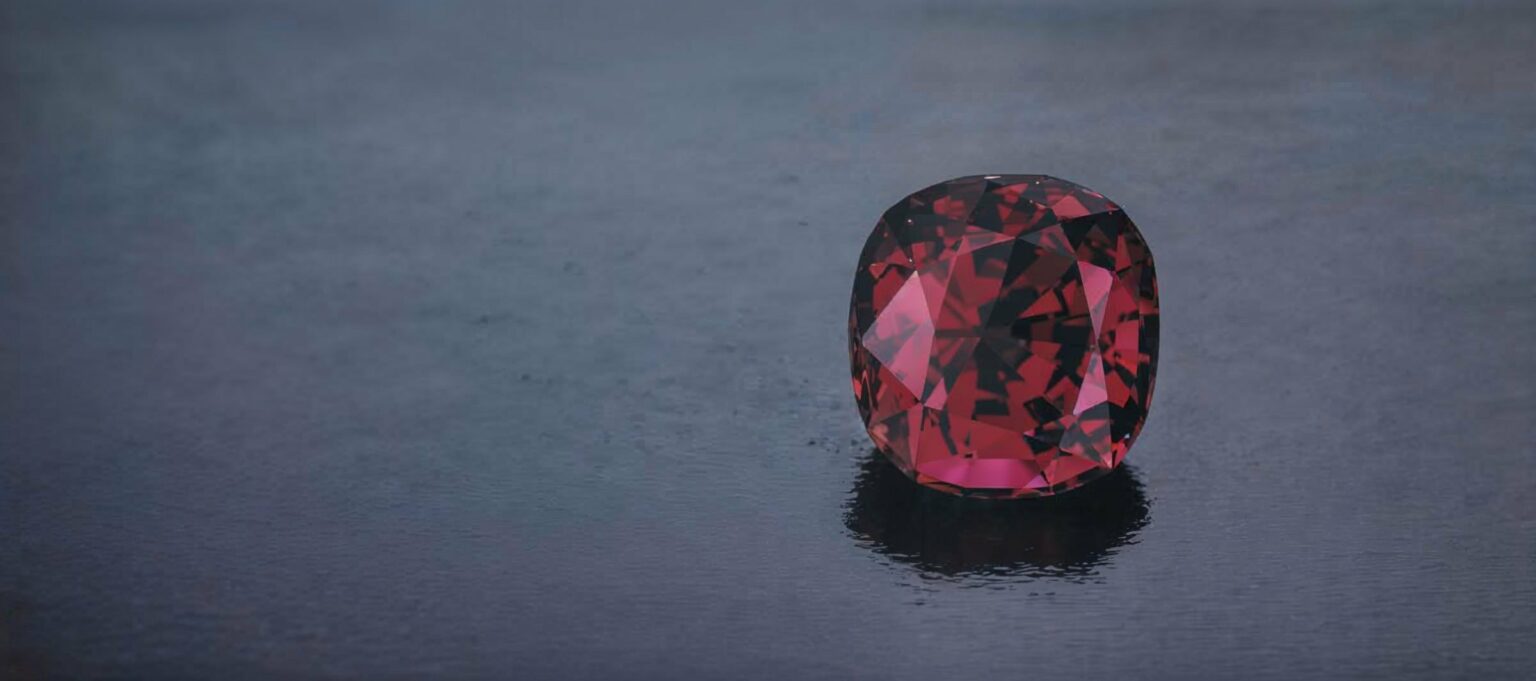Tamerlane, the Mongol conqueror, Henry VIII of England and Peter the Great of Russia are among the fabled rulers who prized red spinels so much they made them crown jewel and royal regalia centerpieces. There’s just one little problem: These potentates thought their pet rocks were rubies.
Luckily for the jewelers who sold, one assumes unknowingly, these sovereigns ruby stand-ins, the stones’ true identities weren’t discovered until centuries afterwards.
Starting in the late 19th century, practitioners of a new science called gemology began to unmask many of the great rubies of antiquity as mimicries from other species—the most common of which by far were spinels.
One by one, illustrious gems such as Russia’s 414.3-metric-carat Imperial Crown ruby and England’s 352.2-carat Timur ruby were deprived of their standing as rubies. Indeed, every historic ruby discussed in Eric Bruton’s 1986 book, “Legendary Gems,” is now a known imposter. The few pride-of-the-realm rubies Bruton mentions that gemologists didn’t expose as spinels turned out to be either garnets or tourmalines.
Yet news akin to finding out that the major canvases signed by Rembrandt were painted by other artists, or that Shakespeare’s plays really had been written by Sir Francis Bacon, was greeted with a curious calm. Could it be that the gem world had all along secretly suspected that many of its great rubies were pretenders?
Maybe. For centuries, spinels had been openly called “Balas rubies” in recognition of their substantial status. (Balas,” or “Balascia,” refers to Badakshan in northern Afghanistan, an active gem-producing region during the Middle Ages whose hulking red spinels were considered the best rubies of their time.) No wonder that today many dealers still call red spinel “ruby spinel.”
There’s the rub. As red spinel has never been forgiven its bastard ruby status. As a result, it has still to come into its own among jewelers. Indeed, if it weren’t for collectors, there would be no market at all for spinel. Why must a stone that can ape the best Burma ruby in color and appearance contend with so much indifference and misunderstanding?
The Mogok Mystique
Nature has done a lot to heighten the centuries-old confusion between red spinel and red corundum (which, technically speaking, is the name for ruby). Spinel and corundum are very often mixed in the same gravels—above in Burma and in Sri Lanka (the major source of fine pastel-pink spinel). Perhaps it is fitting that a stone that can’t live down its resemblance to the world’s most coveted ruby should be found in the very same mining tracts.
Ironically, fine red spinels occur far less frequently than fine rubies. Almost wholly confined to Burma—in particular, that country’s gem-rich Mogok region—supplies of blood-red spinel, never all that great to begin with, have dwindled sharply since that country’s Socialist ruling party chased out Westerners in 1962.
Nevertheless, a steady trickle of fine spinel makes its way into neighboring Thailand. What’s more, there is good reason to believe the trickle could swell considerably if demand warranted it. Burmese rebel tribesmen, said to smuggle gems to the outside world to raise money for arms to fight their country’s central government, seem to pride themselves on meeting the Bangkok trade’s needs. Back in 1980, for instance, when red spinel was actively marketed as an investment in the U.S., there was a brief abundance of the gem. Nowadays, with the spinel market its old lackluster self, Burma’s gem smugglers devote limited concealment space to hotter-selling gems.
However, despite the usual lull in red spinel sales, prices for the gem are actually higher than they were during its short-lived investment popularity. As of mid-1992, jewelers will pay roughly $700 to $1,500 per carat for 1- to 3-carat Burma-color cherry-red spinel.
Top-grade spinels possess a true “pigeon’s-blood” color—a real red if ever there was one. One such stone weighing 3 carats shown to us by New York lapidary Reggie Miller, Reginald C. Miller Inc., recently sold for a breathtaking $3,000 per carat—big money for a red spinel.
Yet Miller thinks the price is cheap. “If the stone were a ruby, it would fetch $10,000 per carat—and that’s just the price among dealers,” he says.
Ironically, the far more expensive ruby would probably sell much faster than a spitting-image spinel. Miller had the 3-carat stone for several years before he finally sold it. It was one of two stones remaining from a superb three-stone lot he bought in Bangkok in 1986. “Believe it or not,” Miller says, “I picked the lot out of a dealer’s box that was marked ‘ruby.’ When I did, I was told immediately that it was spinel. I haven’t seen spinels nearly as good since.” And he probably won’t until Thai dealers pass the word to Burmese gem smugglers to once again bring fine spinels out.
Stigmatized by the Past
From the looks of things, word may not be passed for a long time. Natural spinels have been doing double duty as ruby and sapphire for so long that the gem has been stigmatized as nothing more than a corundum understudy. Its reputation as a substitute was hardened further by the fact that man-made blue spinels—with darker shades Miller says are “reminiscent of a poison-bottle blue”—were widely used as sapphire and aquamarine simulants during World War II.
It is good reputation as a clever counterfeit of other gems, it shouldn’t surprise anyone that many jewelers shun spinel.
“It is hard for the merchant who is used to seeing only man-made spinels to even believe there is a natural variety, let alone that it is rare,” says Laurie Watt, Mayer & Watt, Beverly Hills, Calif. “To break down the retailer’s resistance takes deal or determination—as well as a real love for the gem.”
Of course, the low price of red spinels that look more like their namesakes than rubies has been known to convert a few savvy shopkeepers to this gem’s cause. Because many of these stones have a brown component which gives them a color ranging from a clay to a brick red, the cost to jewelers is often as little as $100 per carat.
In addition, pink spinels give jewelers a chance to offer customers stones as lovely as the finest pink sapphires, ones costing as much as $1,000 per carat, for a fraction of the price. And, Watt notes, “Spinels make a great alternative to rubellite and pink tourmaline because they cost the same money and yet are usually far cleaner and, if cut properly, far more brilliant.”
Please note: this profile was originally published in 1992 in Modern Jeweler’s ‘Gem Profiles/2: The Second 60’, written by David Federman with photographs by Tino Hammid.
The 2.88-carat red spinel shown header image is courtesy of Krementz & Co., Newark, N.J.






